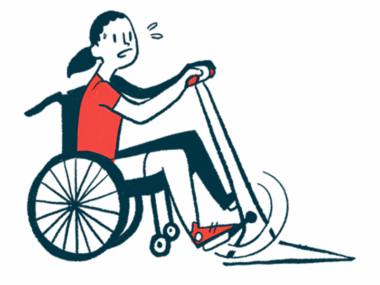Inactivity and Poor Diet Are Common Risk Factors Among MS Patients, Study Says
Written by |

Lack of physical activity and a poor diet may be the most common risk factors for poor health and survival in patients with multiple sclerosis (MS), according to a study.
The research, “Individual And Co-Occurring SNAP Risk Factors,” was published in the International Journal of MS Care.
The development of other medical conditions in MS patients may both delay an MS diagnosis and increase the progression of the disease. SNAP risk factors — smoking, poor nutrition, excess alcohol consumption, and insufficient physical activity — contribute to the development of several health conditions in the general population, but even more so among MS patients.
Previous studies have tried to determine the effect of each SNAP risk factor in MS, but researchers have been unable to determine how multiple SNAP factors combine to increase risk.
The study involved 69 MS patients who reported on their smoking habits, nutrition, alcohol use, and level of physical activity. Researchers also collected data on the sociodemographic and clinical characteristics of each patient.
To be included in the study, patients had to be 18 to 64, had experienced no relapses in 30 days, were able to move about with or without assistance, and could not be pregnant — since pregnancy can alter health behaviors.
The Centers for Disease Control and Prevention’s Tobacco Use Questionnaire was used to evaluate smoking status. It asked patients how many cigarettes they smoked a day or had smoked in their lifetimes. Patients were considered smokers if they smoked every day or some days, and non-smokers if they had never smoked 100 cigarettes or no longer smoked.
Inadequate fruit/vegetable and whole-grain consumption was considered an index of poor nutrition. Researchers defined inadequate consumption as patients failing to meet the fruit and vegetable guidelines of the U.S. Department of Agriculture (MyPlate.gov).
Excess alcohol consumption was assessed by the number of drinks per day. Two or more drinks for men, and one or more for women, exceed health recommendations.
The Godin Leisure-Time Exercise Questionnaire was used to assess physical activity. It consists of measures of mild, moderate, and intense physical activity for at least 15 minutes a day.
The analysis showed that a poor diet was the most common risk factor among MS patients, independent of the presence of other risk factors. An overwhelming 85.5 percent of patients did not follow dietary guidelines.
Also, 73 percent of women and 38 percent of men did not meet physical-activity guidelines.
The co-occurrence of more than one risk factor varied by gender. Lack of physical activity and poor diet showed up in 65 percent of women, versus 38 percent of men. Among the 60.9 percent of patients who displayed two risk factors, 90.3 percent met neither dietary nor physical-activity guidelines.
“Poor diet was the most commonly reported SNAP risk factor, with 85.5% of the sample not meeting dietary guidelines for fruit/vegetable and whole grain consumption,” the researchers wrote. “The nutritional habits of people with MS have not been well studied; however, this study suggests that individuals with MS have nutritional habits comparable to or worse than those of the general population.”
Results suggest “that people with MS are far from meeting physical activity and diet guidelines for health benefits and that women are particularly susceptible,” the study concluded. “Such evidence supports additional examinations of the correlates of and interventions for individual and co-occurring SNAP risk factors, specifically diet and physical activity levels, in people with MS.”





